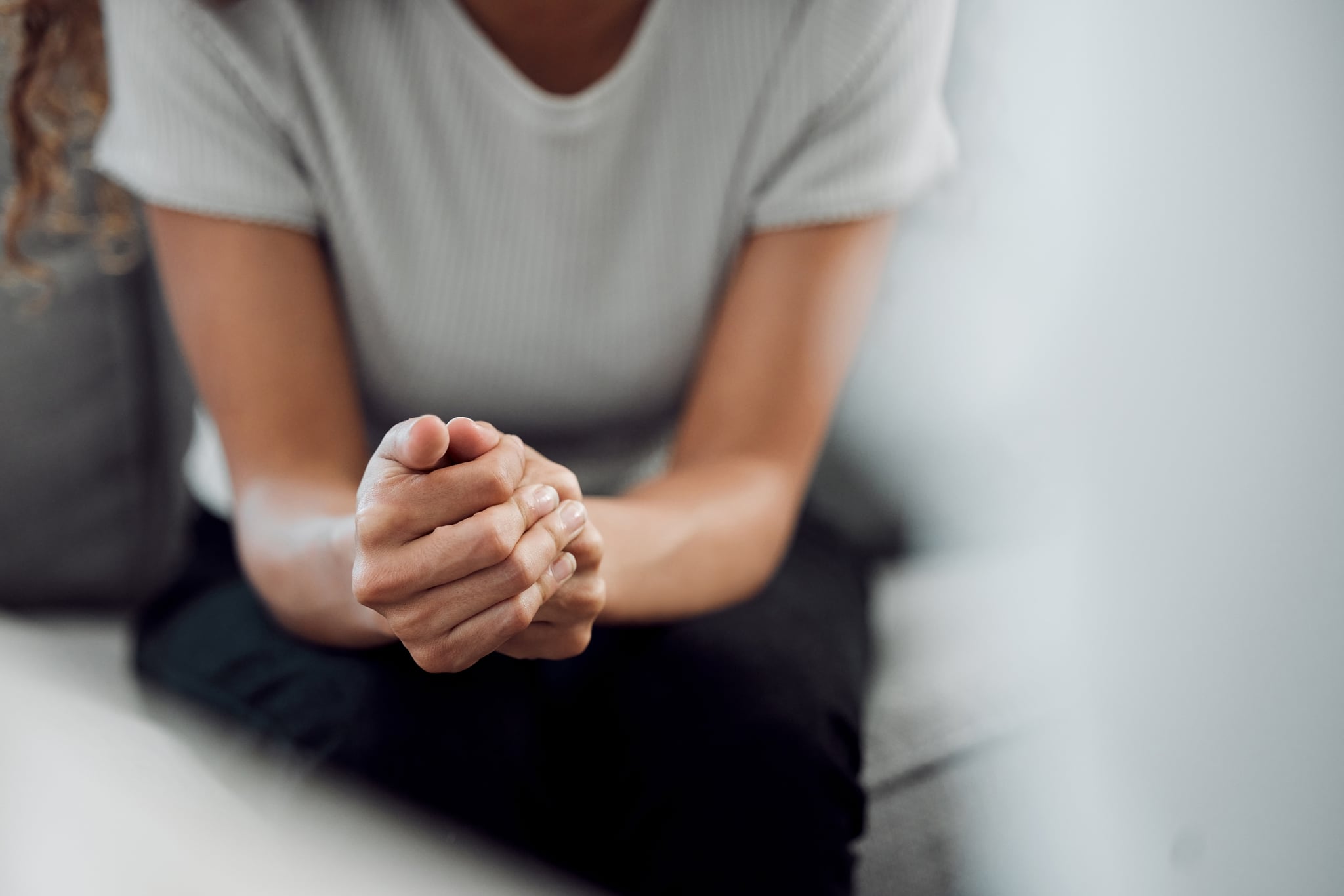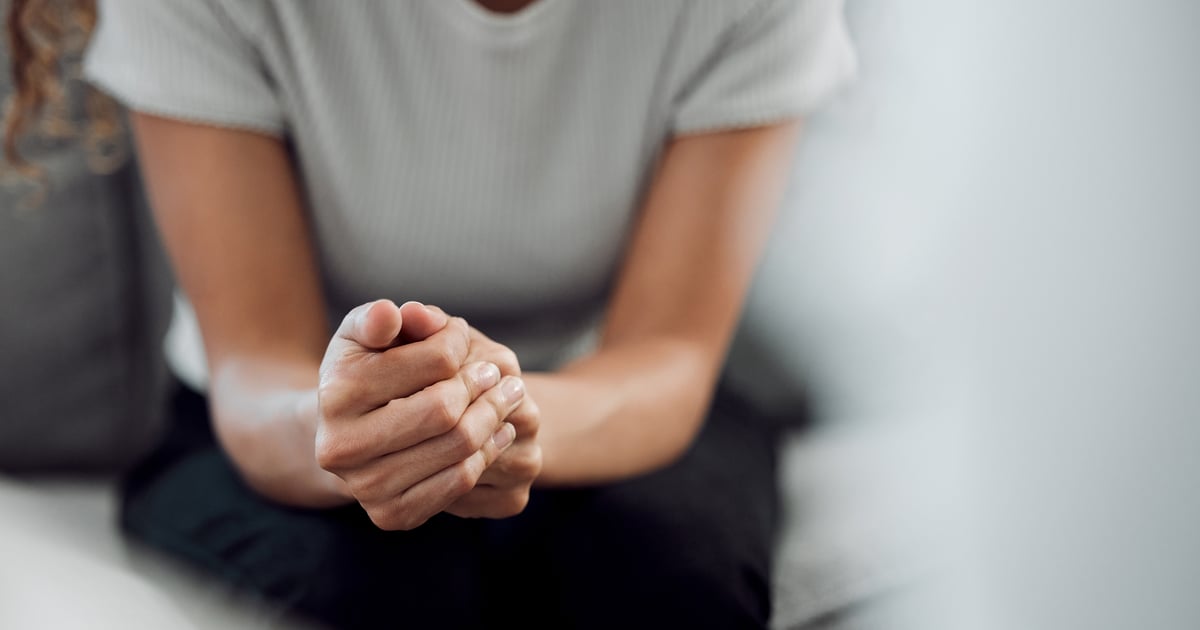
Meghan Lamb received her breast cancer diagnosis during the week of her 29th birthday. “I went to the doctor just for a sinus infection, and I said, ‘By the way, I have this lump. Can you feel this?'” Her primary-care physician suggested they keep an eye on her breast tissue, but three weeks later, her gynecologist insisted on an ultrasound and a biopsy. The results came back: breast cancer, stage 2B.
Approximately 240,000 women and about 2,100 men receive breast cancer diagnoses each year, according to the CDC. The disease is fatal for about 42,000 of those women and about 500 men. For survivors, a clean bill of health rarely amounts to a return to life as usual. Cancer creates seismic shifts in all facets of life, from family to sex to work to self-realization.
Group and individual therapy offers the opportunity for survivors to reflect on their cancer journeys — and who they want to be in the future. “If you asked me, ‘What’s the main goal of therapy?’ I would say it’s knowing all parts of you and learning to integrate them,” says Rosanna Gustafson, LCSW, a therapist and cancer survivor. “In post-treatment therapy, we are seeing ourselves as resilient beings. We are learning to use our voices, advocate for ourselves, share our needs, and explore our fears.”
Survivors say that entering a safe space with a licensed professional — be it alone or with a group — helps them process their journey from diagnosis to remission and answer the all-important question: what comes next?
Therapy Offers Support When Friends and Family Can’t
For cancer survivors, the before and after aren’t so cut and dried. Lamb, who was diagnosed in 2019, says she struggled with asking for help both during her cancer treatments and after recovery — and the time after recovery came with additional, unexpected challenges. “You want to keep talking about cancer because you’re having all these feelings,” Lamb says. “You’re experiencing life completely differently than you were before you got your diagnosis. It’s even more challenging [in recovery] because everyone’s like, ‘Well, you’re good now.'”
In therapy, there’s no expectation that your cancer journey ends the moment your scans come back clean. “Therapy allows survivors to talk about those fears and not feel like they’re burdening their families or having their family respond in a way that dismisses their fears,” Gustafson says.
Speaking with a counselor in a group or individual setting may also allow breast cancer survivors to adopt helpful coping skills (such as mindfulness) and express complicated emotions that they may feel guilty unloading on their friends and family.
“The biggest takeaway [of group therapy] for me is just that it sucks — and it’s OK that it sucks.”
LaDonna Beal, 36, received her breast cancer diagnosis in February 2023. She was 35 years old. Her doctors suggested an aggressive approach to treatment, including a radical mastectomy of her left breast, lymphovenous bypass, chemo, and radiation.
At the time of her diagnosis, Beal was already participating in weekly therapy sessions, and she continued with individual counseling throughout her treatment. But in the wake of her cancer diagnosis, she says she found the most support in community groups — in particular, one group led by therapist Rachel Ress, LCSW, community coordinator for Cancer Support Community (CSC) in Washington DC.
“I’ve actually been with that support group since I finished radiation,” Beal says. The camaraderie and trust she’s established with the other cancer survivors is what keeps her coming back. “The biggest takeaway [of group therapy] for me is just that it sucks — and it’s OK that it sucks,” Beal says. “We have friends and loved ones who really want to support us, but I think we all agree that they don’t speak the language. You just want to feel like somebody understands — and only someone with cancer does.”
Therapy Allows Survivors to Process Physical Changes
Group or individual therapy allows folks like Beal and Lamb to explore the everyday effects of cancer recovery that those without the disease may not understand. “[Cancer] challenges our paradigms and our beliefs about ourselves and our bodies. We may even feel like they betrayed us,” Gustafson says.
For many, breast cancer will amount to some sort of physical transformation. Scars, reconstruction, and chemo-related hair loss may amount to no longer feeling at home in your skin. Plus, many breast cancer survivors — even those in their 20s and 30s — grapple with early menopause from taking immunotherapy drugs (which alter hormone levels). Symptoms such as hot flashes, low libido, vaginal dryness, and night sweats may follow. “I’m 36 going through menopause with a 3-year-old jumping and climbing on me,” Biel says.
“I’m 36 going through menopause with a 3-year-old jumping and climbing on me.”
Lamb has also watched her body change throughout her treatment. “When you’re diagnosed, they ask if you want to do any sort of fertility treatments first for egg preservation,” she says. “I did that, and then I did chemo, a bilateral mastectomy, and a reconstruction.” In therapy, she gets to talk through the ongoing mental side effects of these procedures.
“Having a cancer diagnosis as a young adult is a different experience than any other diagnosis because you’re at this point in your life where you’re just starting to become yourself,” Lamb says. Gustafson agrees that, in her experience, young cancer survivors have very specific obstacles to overcome.
“Femininity, sexuality — it’s all affected by cancer, right? It’s not that it isn’t with older women, but they’re just at a different stage of life,” Gustafson says. “Young cancer survivors are still in the building part of their lives. They’re still building relationships or thinking about having and nursing children.”
Therapy Helps Survivors Navigate Planning For the Future
Therapy supports survivors in stitching their lives back together after treatment, certainly — but it also helps them handle the possibility of that cancer returning for yet another interruption. Learning to cope with uncertainty is a necessary tool for survivors.
“Scanxiety,” or the mixed bag of terror, hope, and stress that arises with an upcoming imaging scan on the calendar, is one such lasting effect of cancer. Generally speaking, cancer patients go in for scans at least once a year for the five years following their breast cancer treatment. However, the frequency may vary depending on the diagnosis. “It’s very difficult for me to really focus on myself — even in therapy,” Lamb says. “My therapist has given me permission to still be upset and to still work through my scanxiety that comes up any time I have an ultrasound or something like that.”
The long months between visits can be yet another source of scanxiety. “When people are finished [with] treatment, they expect to feel better. They don’t expect to feel like they’re in the middle of nowhere, without anyone telling them they’re doing OK on a regular basis,” says Karen Costello, senior director and patient navigator of CSC’s Cancer Support Helpline, which helps cancer survivors understand their insurance benefits.
Of course, there’s also the stress that accompanies paying for scans, procedures, and therapy. According to the National Cancer Institute, breast cancer care costs almost $35,000 for the first year of treatment and about $3,500 in the years following. “Getting to know your insurance plan and your benefits becomes really important with a cancer diagnosis,” Costello says.
Beyond financial and scanxiety stress, survivors often experience existential anxiety: how will their cancer journeys reshape their futures? Does the life they were living pre-cancer still make sense to them now? These are all questions that come up, again and again, in therapy.
For Lamb, evolution after cancer meant switching career paths. Before her diagnosis, she worked in a museum’s marketing department. “My background is in the arts. When I got my diagnosis, the first two things I said were: ‘I don’t want to die,’ and, ‘Work is going to be so mad.’ Because I just was not in a healthy work environment,” Lamb says. She was right: throughout her treatment, her work culture made her feel bad for taking time off for appointments and guilted her into coming back to the office before she felt ready.
“When I got my diagnosis, the first two things I said were: ‘I don’t want to die,’ and, ‘Work is going to be so mad.'”
Then, a new door opened. Lamb landed a job as the director of marketing and communications at Gilda’s Club in Nashville, a community organization for people with cancer. Her new role allows her to combine her love of the arts with her cancer journey. Once a month, she even leads an art workshop featuring activities such as making friendship bracelets or watercolors. She says that her realizations in therapy helped her combine her passion for art with her cancer journey.
For Biel, stepping into the future has involved joining as many support groups as possible — and even founding one herself. Prior to her cancer diagnosis, Beal started attending therapy to navigate single parenthood. Now, she’s becoming a source of support herself. “I decided that I wanted to start my own support group for single parents of children with autism,” she says. “I started the group a couple of weeks ago, and I already have 10 members.” She adds that though this group isn’t directly cancer-related, it does provide the fellowship that she’s found infinitely helpful in the breast cancer support group she attends.
“Sometimes it’s just that little something that is so validating and makes your day and gives you something to look forward to,” Biel says.
Resources For Breast Cancer Survivors
Breast cancer survivors who are interested in group or individual therapy have many resources at their disposal. CSC and Gilda’s Club alone account for about 190 locations worldwide that provide free counseling, guidance, and support to those in need. The American Cancer Society also offers an extensive toolkit for survivors and caregivers entering the post-treatment era.
If therapy feels financially out of reach, Fran’s Place and HealthWell Foundation offer survivors free counseling and/or therapy grants. Seeking out therapists who offer sliding-scale or pay-what-you-can models for therapy is yet another avenue to explore.
“The hardest part is taking that first step and making your first appointment,” Lamb says. “Have a friend help you look for a therapist. You don’t have to do it on your own.”
Kells McPhillips is a health and wellness writer living in Los Angeles. Her journalism has appeared in The New York Times, Well+Good, Fortune, Runner’s World, Outside, Yoga Journal, and others. On the brand side, she regularly works with Peloton, Calm, and Equinox. She is also the author of the Substack Life Lives.
